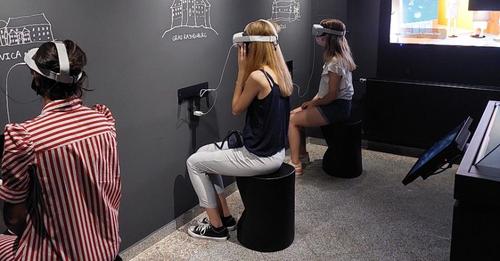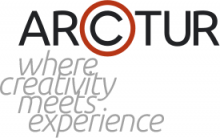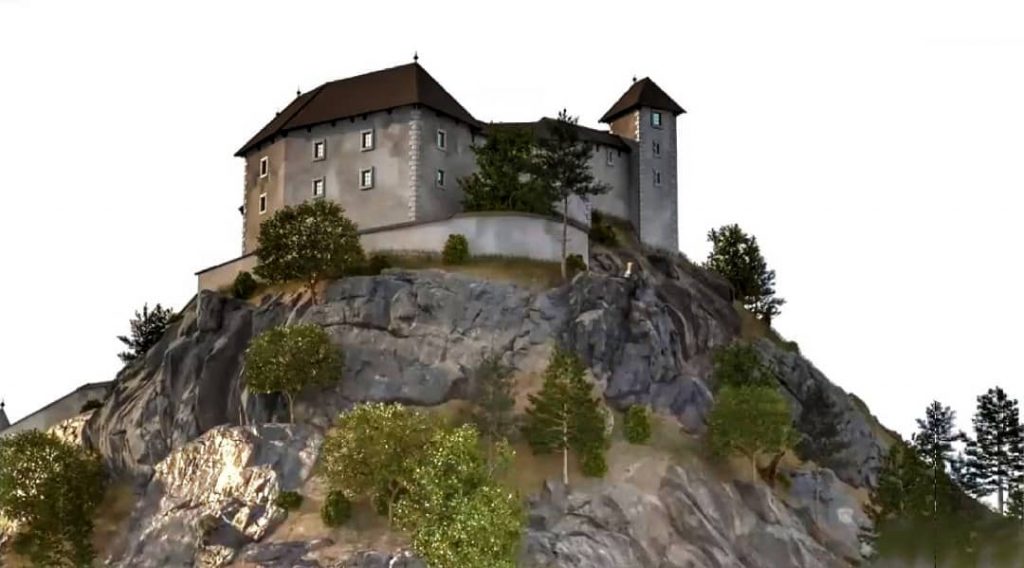|
Digital meets Culture https://www.digitalmeetsculture.net/article/meet-weave-team-arctur/ Export date: Sat Apr 19 16:33:26 2025 / +0000 GMT |
Meet WEAVE Team: ARCTUR On a regular schedule, the WEAVE team publishes a blog post which features a partner of the WEAVE consortium. This blog item presents partner ARCTUR.  Established in 1992, Arctur has been pioneering by merging research, science, art and business. The headquarters of the company are in Nova Gorica and with additional locations in the Slovenian capital, Ljubljana. We are one of the main commercial suppliers of high-performance computing services and solutions for SMEs in Central and Eastern Europe. Arctur has its own HPC and Cloud Computing infrastructure to be used as the technological foundation for advanced HPC and Cloud computing solutions and innovative IT services in a distributed, high-redundancy environment. Established in 1992, Arctur has been pioneering by merging research, science, art and business. The headquarters of the company are in Nova Gorica and with additional locations in the Slovenian capital, Ljubljana. We are one of the main commercial suppliers of high-performance computing services and solutions for SMEs in Central and Eastern Europe. Arctur has its own HPC and Cloud Computing infrastructure to be used as the technological foundation for advanced HPC and Cloud computing solutions and innovative IT services in a distributed, high-redundancy environment.The company has extensive experience and a long track record of EU projects in the deployment of complex IT systems specialized for SMEs in different sectors. At the moment we employ around 50 skilled co-workers and experts (analysis, technicians, researchers, web developers, project managers, etc.) that are fully involved in the daily tasks and credited with the achievements and work that the company is doing today. So because of that, Arctur has been a home for Tourism 4.0 for the last 3 years. The initiative that is unlocking the innovation potential through collaboration between all stakeholders in the smart tourism ecosystem to co-create enriched experiences with the help of the key enabling technologies from Industry 4.0 which has grown into a partnership of 180+ international members from academia, business and other institutions.  The Tourism 4.0 ecosystem connects the T4.0 Core APIs with the technology pillars T4.0 DOTI, CIT, FLOWS and TIM. T4.0 Core is built on state of the art HPC infrastructure supported by AI, blockchain and HPDA, which ensures efficient, safe and transparent access to data and its exchange. DOTI is a personal digital passport that allows the individual (tourist) to maintain ownership and full control of their own data. Collaboration Impact Token (CIT) is a crypto voucher based on blockchain technology that changes the value in time and places intending to award positive behaviour and support the redirection of tourist FLOWS. Tourist destination managers, service providers, researchers want to better understand tourist flows: what impact traffic flows have, when traffic peaks are occurring, what are the seasonal effects, which areas are more / less congested with tourists, how the weather, holidays and other events affect tourist flows. Tourism Impact Model (TIM) is a tool using real data to create an objective picture of the impact of tourism in a certain micro-location. In 2020 TIM was rewarded as The Best Innovation on AI and Data Analytics at the Tourism Innovation Summit in Seville, Spain and in the same year it also received The Golden recognition for Best innovation, awarded by The Chamber of Commerce and Industry of Slovenia. The Tourism 4.0 ecosystem connects the T4.0 Core APIs with the technology pillars T4.0 DOTI, CIT, FLOWS and TIM. T4.0 Core is built on state of the art HPC infrastructure supported by AI, blockchain and HPDA, which ensures efficient, safe and transparent access to data and its exchange. DOTI is a personal digital passport that allows the individual (tourist) to maintain ownership and full control of their own data. Collaboration Impact Token (CIT) is a crypto voucher based on blockchain technology that changes the value in time and places intending to award positive behaviour and support the redirection of tourist FLOWS. Tourist destination managers, service providers, researchers want to better understand tourist flows: what impact traffic flows have, when traffic peaks are occurring, what are the seasonal effects, which areas are more / less congested with tourists, how the weather, holidays and other events affect tourist flows. Tourism Impact Model (TIM) is a tool using real data to create an objective picture of the impact of tourism in a certain micro-location. In 2020 TIM was rewarded as The Best Innovation on AI and Data Analytics at the Tourism Innovation Summit in Seville, Spain and in the same year it also received The Golden recognition for Best innovation, awarded by The Chamber of Commerce and Industry of Slovenia. One of the larger programs within Tourism 4.0 is Heritage +, where their main goal is to prevent that our roots and cultural heritage aren't left out of the new mixed-reality world, where the new generations already live in. After all our heritage makes us who we are. Heritage+ is an innovative approach to creating new enriched tourist experiences based on cultural heritage. It uses advanced technologies (360° photo and video, Augmented Reality, 3D scanning, modelling and printing, Simulated Reconstruction, …), hybrid skills of digital business model development, and strategic planning of digital transformation. It is an awarded social innovation, answering the needs of society and local communities for sustainable development, communication of heritage values and reinforcement of the sense of belonging.  As an example of good practice, we are presenting the e-Castles of Posavje, where they just recently opened the door to a new, unique virtual experience and designed a digital room where 3D models of castles are exhibited. The room also includes VR glasses where 360-degree videos from all 7 castles take the visitors around the region in just a few minutes. VR glasses or Virtual reality is a form of computer simulation where the key challenge is to trick the brain into being in a virtual rather than a real environment, as our brains are much more advanced than the most advanced video screens. We can achieve that with the most important piece of a virtual reality kit that is the headset, a device like a thick pair of goggles that goes over your eyes. All images in this post are courtesy of Arctur. Website: https://www.arctur.si/ |